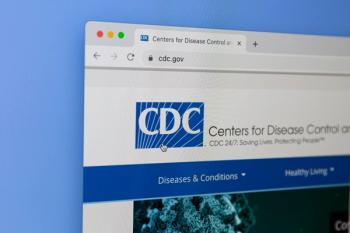
FDA OKs Niraparib for Patients with HRD-Positive Advanced Ovarian Cancer
Niraparib (Zejula) received approval for patients with advanced homologous recombination deficiency-positive status ovarian cancer who have received 3 or more prior chemotherapies.
The FDA today approved niraparib (Zejula, Tesaro) for the treatment of patients with advanced homologous recombination deficiency (HRD)-positive status ovarian, fallopian tube, or primary peritoneal cancer who have received 3 or more prior chemotherapies.
HRD-positive status is defined by either a deleterious or suspected deleterious BRCA mutation, or genomic instability and who have progressed more than 6 months after response to the last platinum-based chemotherapy, according to the prescribing information.
Niraparib, which is a poly ADP-ribose polymerase (PARP) inhibitor, is also approved in the maintenance treatment setting for adult patients with recurrent ovarian cancer. It was the first oral PARP inhibitor approved for this patient population.
The approval for niraparib’s indication in HRD-positive status patients is based on efficacy and safety data from the QUADRA trial, which included 98 patients with advanced ovarian cancer with HRD-positive tumors. Patients included in the study had been treated with 3 or more prior lines of chemotherapy and did not have prior exposure to PARP inhibitors.
Related:
All patients received 300 mg of niraparib once daily until disease progression or unacceptable toxicity.
Overall, the results showed that the objective response rate (ORR) was 24% (95% CI: 16, 34) in the HRD-positive group and all were partial responses. The estimated median duration of response was 8.3 months (95% CI: 6.5, not estimable).
In patients with tumor BRCA mutated ovarian cancer, the ORR was 39% (7/18; 95% CI: 17, 64) in patients with platinum-sensitive disease, 29% (6/21; 95% CI: 11,52) in those with platinum-resistant disease, and 19% (3/16; 95% CI: 4, 46) in patients with platinum-refractory disease, according to the study.
Seventy-three percent of patients in the study experienced adverse effects (AEs) that led to dose reduction or interruption, with the most common AEs being thrombocytopenia, anemia, neutropenia, nausea, vomiting, fatigue, and abdominal pain.
The recommended niraparib dose is 300 mg taken once daily with or without food.
Last month, positive data were presented at the
References
FDA approves niraparib for HRD-positive advanced ovarian cancer [news release]. FDA’s website.
Niraparib Prescribing Information. FDA. Published October 23, 2019. https://bit.ly/35Y6xCx. Accessed October 23, 2019.
Newsletter
Stay informed on drug updates, treatment guidelines, and pharmacy practice trends—subscribe to Pharmacy Times for weekly clinical insights.














































































































































































































